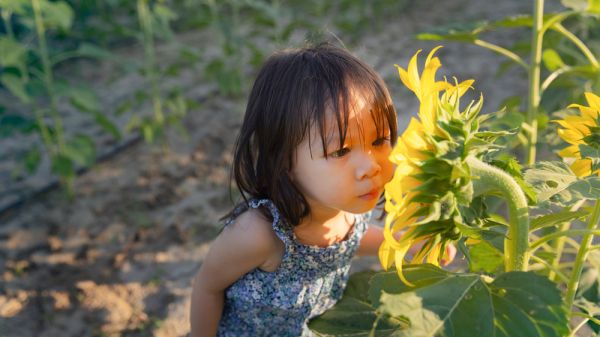Beyond Scaffolding in Early Childhood Education and Education to the Environment. Secret Learning Spaces Known Only to Children.

Beyond Scaffolding in Early Childhood Education and Education to the Environment.
Secret Learning Spaces Known Only to Children.
Suzanne Major PhD
Anthropology of Early Childhood Education
This is the fifth of a series of eight discussions on principles, processes, and strategies involved in early childhood education, including environmental education. It will revisit the cognitive process of « connaturality » explained in the preceding blog titled: Processes Involved in Environmental Education for Young Children. The Case of the Frightening Butterfly, and it will link it to an introduction to the developmental process of « auto-eco-reorganization »[1] or « eigenorganization»[2], « autopoietic »[3] and « chaosmosis »[4]. The thinkers behind those strange words (Morin, Herzogenrath, Guattari, Malara, Varela) are more important than these concepts named to identify how the authors understand the structuring of knowledge and the process of development. Think of those concepts as knowledge and development structured in multiple possible strata as opposed to knowledge and development occurring through scaffolding. Some think the stratus take the form of circles. [5] Others think the strata take the form of spirals. [6] Scaffolding is more linear as in A + B + C, and hierarchical as in level one + level two + level three.
The concept of scaffolding is widely used in early childhood education programs. Imagine a young child being presented a four-piece puzzle with matching images at the bottom of the template, then being offered a ten-piece puzzle with the image of the puzzle on top of the puzzle box, and finally being offered a thirty-piece puzzle with no image as a reference. Or think of a young child being presented with a toy made of three geometric figures -- round, square, triangle-- where association is expected between the figures and the space they fit in, then being offered a large ball with cut-in spaces for twelve geometric figures, and finally being given many triangles, rectangles, and squares, and asked to form a hexagon, an octagon or trapezoid. Going from simple to complex and building knowledge and experience is the basic idea behind scaffolding. It is an educational strategy that belongs to realm of literacy/alphabetization. It requires that an intersubjectivity (think of it as a learning space) occurs between an adult, an object, and the child.
Organization of knowledge and development in strata requires that knowledge and experiences be retrieved from the realm of the concrete mind, thinking with our whole body, using our senses, and intuition, in the learning space between our body and reality. It also requires that knowledge and experiences be retrieved from the realm of literacy/alphabetization thinking with our intellect in the learning space between our intellect and the intellect of others. Finally, it requires that knowledge and experiences be retrieved from the realm of opsistiation (education through fast moving images and sounds on screens) thinking with our affect in the learning space between our affect and that of others. Remember that the concrete mind relies on analogies to exercise its rationality. Literacy/ alphabetization relies on syllogism and opsistiation relies on algorithms.
The realms of the concrete mind, literacy/alphabetization and opsistiation are three interlocking bodies of knowledge. Within their learning spaces between the body and reality, the intellect and the intellect of others, and the affect and the affect of others, the process of « connaturality » takes place. The child engages in a dialogic rapport and adapts his knowledge and experience to that of others and to the realities presented by nature and experienced with it. The child chooses to retain, or not, knowledge and experiences of other, and influences that of others in return. A co-construction of knowledge and experiences occurs with unpredictable degrees, directions, or speeds. Any and every « assemblage » [7] is possible as it is influenced by the biological, social, economic, environmental contexts of the child as well as its health, temperament, character, intelligence, dispositions, and personal history. Strata of knowledge and experience develop in all the different learning spaces and interaction occurs between them. The many strata are kept in memory. Some can be discarded with time like the ones composed at a very early age. Some are active and some are inactive. Some strata can be very strong and block out any other stratum that might present themselves to the mind protecting itself with beliefs, convictions, and partisanship. What needs to be underlined is that child development is extremely complex, and that everything is possible. Early education to the environment specifically is also possible and it occurs within the intersubjectivities or learning spaces.
Let me share an exert from a book I wrote that talks about a three-year-old’s experience visiting a garden for the first time. This account was based on a two-hour observation session where the child’s reactions and specifically what caught her attention, were documented.
«She opens the gate and walks in the garden. The tall fuchsia hollyhocks first catch her eye with their drooping double flowers, attached to the stem by lime-green finger-like leaves. She goes around the plant, from one flower to the other, lured by their bold colour and intricate petals. Like little ballerinas, they seem to dance in the wind. Standing tall beside them are giant yellow sunflowers, some so heavy that they bow to the little girl, showing their rich brown hearts huddled by long sheer yellow petals. Standing up to them, she measures herself to the tall barky stems. She must stand on her toes to peer into the heart of the flowers. It takes a few moments before she hears the buzzing of yellow bees flying around. Putting her face into one flower, suddenly she sees a few of them busily walking about. She has never been stung, so she just enjoys the sound of the buzzing and the brightness of the sun lighting up the yellow flowers. She pulls back to look at the little forest of giant sunflowers standing so tall, trumpeting to the sun and the sky. She lifts her head to join the choral with her vibrating delight as the sun drops warm kisses on her cheeks.
Around her, pole beans with their scarlet-red flowers climb up a trellis, bunches of daisies snug up to the garden bench, and rows and rows of tomatoes, celery, summer squash, radishes, potatoes, and sweet peppers grow side by side, up and down the garden. She does not yet see the brown sturdy earth spiders rummaging about at her feet, but she feels the black and white chickadees swooping through, catching them out of the corner of her eyes. A curious little one lands very close to her, perched on a summer flagpole, and chirps away a conversation, showing its yellow sun stroked round belly. The breeze comes in and goes out the garden, flirting with the little girl, carrying the scent of roses nearby, of humid black soil, raising corn fields, and fresh-cut grass.
Element by element, she will collect information that will fill her thoughts. She will experience sensations and feelings that will compose her experiences. As she puts words on everything, they will take their place in her memory. Close by, the gardener kneeling calls her to join him in his task. He is digging holes to plant blue delphiniums and proposes his intersubjectivity to her. The little girl sees the gardener’s big hat and a grow bed beside him filled with little budding plants. He was waiting for her and offers a fitting straw hat with daisies on it, which she accepts with a smile. He explains that these little plants need to be put into the grown to be able to grow and become bright blue flowers for his bees. She might choose to play with the hat, or kneel on the ground to examine the plants, or she might pick up the trowel to dig some holes. She might be adamant and work hard, or hesitant and be distracted. He will call her attention, encourage her to focus, teach her to identify and name things, to ask questions, and so, a part of their intersubjectivities will intertwine for a while, and elements will be exchanged. She might decide to go play and chase some butterflies for a few minutes. »[8]
These three-year old’s strata are filled with information, sensations, emotions, experiences, and knowledge. The child will only keep in mind some of them. At the same time, she created other spaces of intersubjectivity between her body and the plants, the animals, the insects, the sun, the air, the wind, the clouds, and the sky in her environment. Unconscious spaces of intersubjectivity might very well have occurred with elements from the cosmos. Because of her youth, they all call on her with equal force. She is free because she is protected by her egocentricity. She can follow her impulses and go towards the elements her senses lead her to. There she can build a body of information, knowledge, and experiences all her own. It is not certain if the intersubjectivity with the gardener will remain. And again, from that moment on, she might entertain an interest in gardening, or develop a real passion for it. Or she might forget about it for a few years, and rediscover it much later in life, because of the signatures left by her early experience. She might also be interested only for a little while. It is all part of the educational experience. The content of intersubjectivities or learning spaces are known only to the child in its own mind. A secret well kept indeed! The spaces are inaccessible to adults as such but can be enriched by proposing information, knowledge, and experiences.
Il you liked this blog, please let me know! Suzanne.major@umontreal.ca
SM/sm October 2021, blog 13 (5-8)
[1] Morin, E. (2001: 58). L’intelligence de la complexité. L’Harmattan, 332 pages.
[2] Atlan, H. (1979: 89). Entre le cristal et la fumée, Edition du Seuil, 287 pages.
[3] Berressem, E. (2010: 59). Structural Coupling: Radical Constructivism and Deleuzian Ecologics, in Herzogenrath, B., Deleuze/Guattari & Ecology, Palgrave MacMillan, 57-101.
[4] Idem (2010: 60). (Guattari, F. (1995).
[5] Cajete, G. (1994: 16). Look to the Mountain: An Ecology of Indigenous Education, Kivaki, 244 pages.
[6] Bruner, J. (1960). The Process of Education. Harvard University Press, 128 pages.
[7] Berressem, E. (2010: 59). Structural Coupling: Radical Constructivism and Deleuzian Ecologics, in Herzogenrath, B., Deleuze/Guattari & Ecology, Palgrave MacMillan, 57-101. (Deleuze, G. (1980)
[8] Major, S. (2019: 136). Light Bearing Children. Early Childhood Education and Complexity. Self-published. 158 pages.
